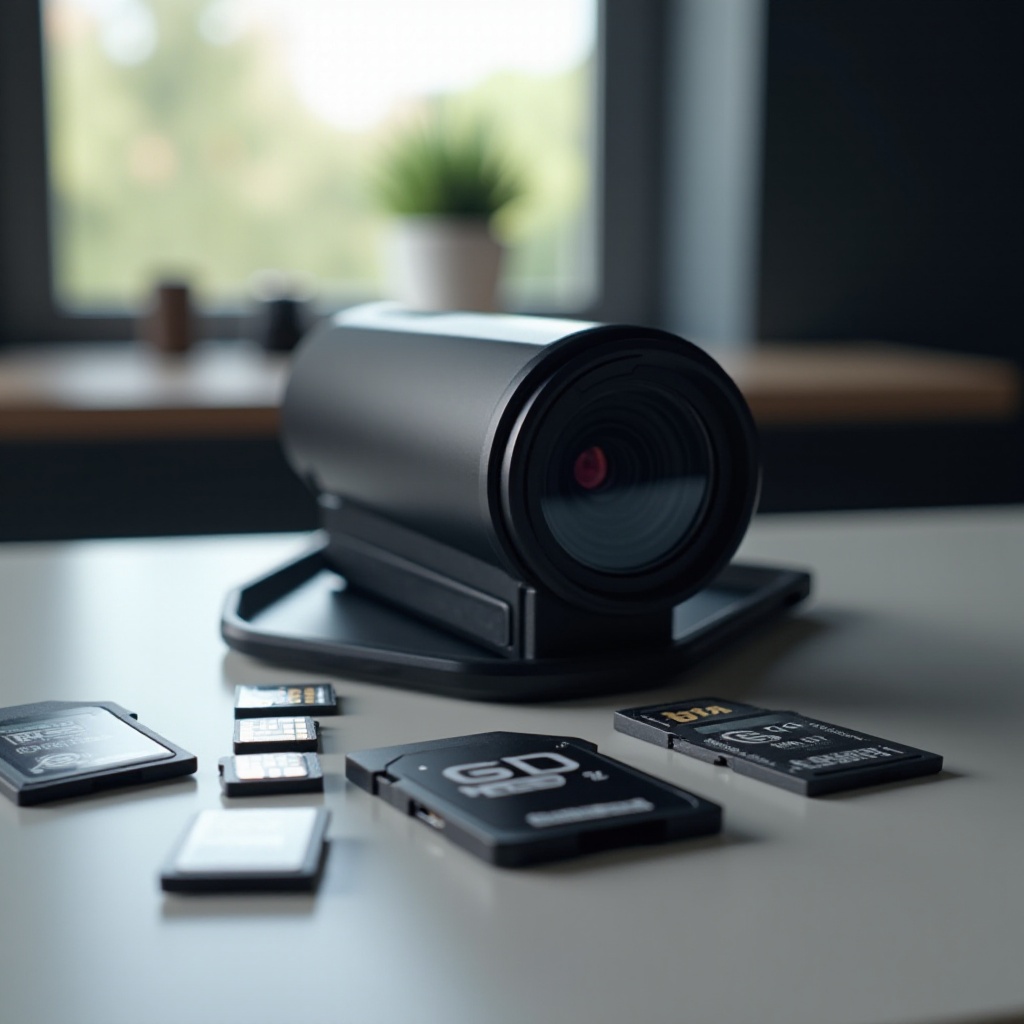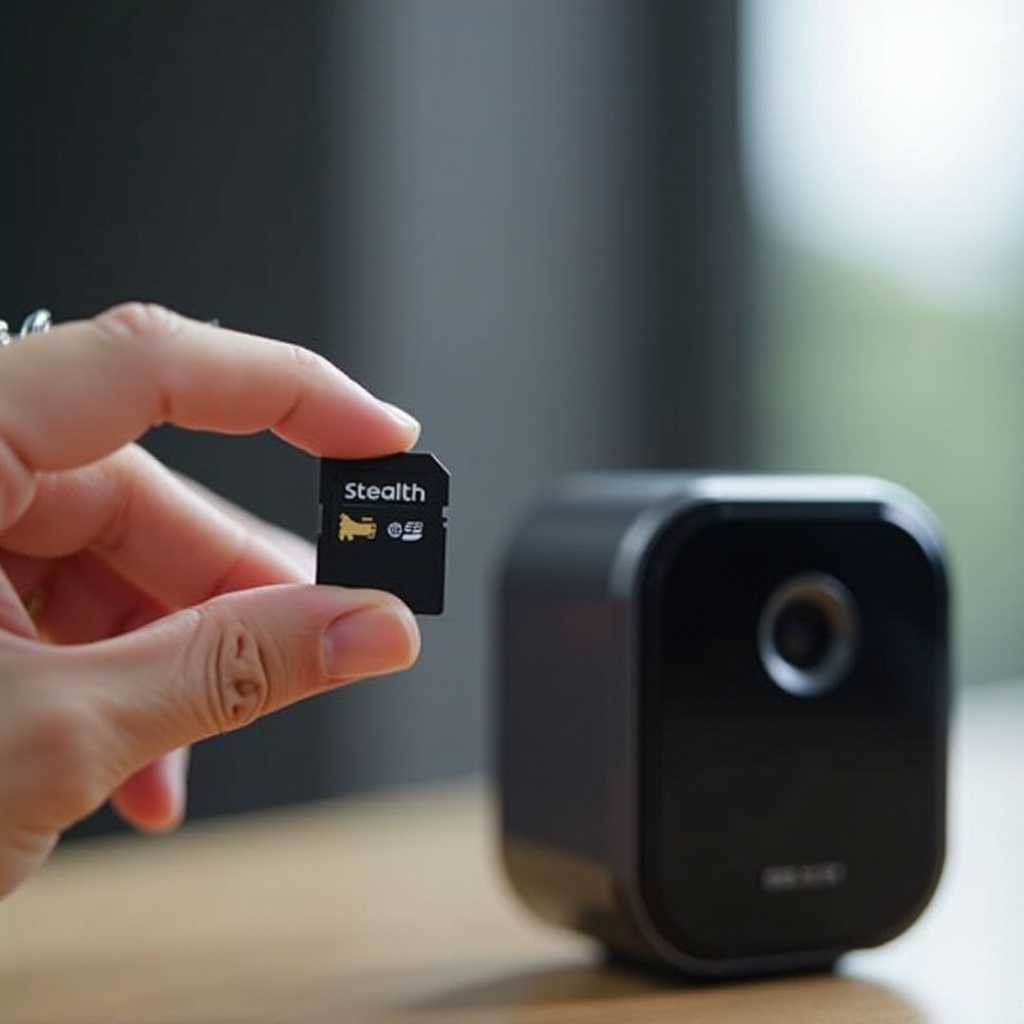Introduction
When it comes to recording high-quality videos on a Stealth 4K camera, having the right SD card and ensuring it is correctly formatted is essential. Many users encounter issues such as lagging, data corruption, or camera malfunction due to improper SD card formatting. This guide will help you understand how to format your SD card correctly, ensuring smooth and reliable 4K recording.

Understanding SD Card Types for 4K Cameras
Choosing the right SD card for your Stealth 4K camera is crucial. Not all SD cards are created equally, and using the wrong type can significantly impact your recording experience.
SD Card Classes and Speed Ratings
SD cards are classified and rated based on their speed and capacity. The speed class, such as Class 10, UHS-I, and UHS-II, indicates the minimum write speed. For 4K recording, a UHS Speed Class 3 (U3) or Video Speed Class 30 (V30) or higher is recommended. These ratings ensure that the card can handle the high data rates required for 4K video.
Recommended SD Card Specifications for 4K Recording
For optimal performance, use SD cards with the following specifications:
– Capacity: 32GB to 256GB or higher
– Speed Class: U3 or V30 and above
– Write Speed: Minimum of 30 MB/s
These specifications ensure that your SD card can handle continuous 4K recording without causing drop frames or data corruption.
Why Formatting Your SD Card is Crucial
Properly formatting your SD card is vital for a seamless recording experience and long-term data reliability.

Benefits of Regular SD Card Formatting
- Optimized Performance: Regular formatting removes fragmented data and resets the file system, ensuring the card operates at peak performance.
- Prolonged Lifespan: Formatting helps extend the lifespan of your SD card by reducing wear and tear.
- Error Prevention: Correct formatting helps avoid data corruption and errors that can result from partial data write failures.
Risks of Using Unformatted or Improperly Formatted Cards
- Data Corruption: An unformatted or improperly formatted card can lead to corrupted video files.
- Recording Errors: Your camera might fail to write data properly, leading to dropped frames or incomplete recordings.
- Reduced Performance: You might experience slow write speeds, causing lag during recording.
Step-by-Step Guide to Formatting SD Cards for Stealth 4K Cameras
To ensure your SD card is ready for use, follow these steps to format it properly.
Required Tools and Software
You will need a compatible SD card reader, a computer (Windows or Mac), and formatting software (if formatting via computer).
In-Camera Formatting
- Insert the SD card into your Stealth 4K camera.
- Power on the camera and navigate to the settings menu.
- Locate the ‘Format’ option within the storage settings.
- Select ‘Format’ and confirm your choice. The camera will format the SD card.
Computer Formatting (Windows and Mac Instructions)
Windows:
1. Insert the SD card into the reader and connect it to your computer.
2. Open ‘File Explorer’ and locate your SD card.
3. Right-click on the SD card and select ‘Format.
4. Choose the file system (exFAT is recommended for 4K recording).
5. Click ‘Start’ and wait for the process to complete.
Mac:
1. Insert the SD card into the reader and connect it to your Mac.
2. Open ‘Disk Utility’ from the Applications > Utilities folder.
3. Select your SD card from the sidebar and click ‘Erase.
4. Choose the file system (exFAT for 4K recording) and click ‘Erase.
5. Wait for the process to complete.

File System and Allocation Unit Size Explained
Choosing the right file system and allocation unit size can impact the efficiency of your SD card when used with a Stealth 4K camera.
Choosing the Right File System (FAT32, exFAT, NTFS)
- FAT32: Suitable for cards up to 32GB, but not ideal for large files typical of 4K recordings.
- exFAT: Supports larger file sizes and is recommended for 4K video.
- NTFS: Generally not used for SD cards in cameras, more common for hard drives and non-camera devices.
Recommended Allocation Unit Sizes for Optimal Performance
Choosing the right allocation unit size (cluster size) helps in efficient data storage and retrieval:
– For 4K video, an allocation unit size of 64KB (or higher) is suitable to handle the large file sizes more efficiently. This helps in avoiding fragmentation.
Maintaining Optimal Performance
Formatting your SD card is essential, but you also need to maintain it for perfect performance.
Best Practices for SD Card Care and Management
- Avoid Overfilling: Keep at least 10% of the card’s capacity free to ensure optimal performance.
- Safely Eject: Always eject your SD card safely from the camera and computer.
- Keep Clean: Avoid physical damage and keep the card away from extreme temperatures.
Regular Maintenance Tips to Prevent Data Loss and Corruption
- Frequent Formatting: Regularly format your SD card to prevent data corruption.
- Data Backup: Always backup important files to a computer or cloud storage.
- Use Genuine Accessories: Use authentic SD card readers and cameras to avoid compatibility issues.
Conclusion
Formatting your SD card properly is not just a one-time task but a regular maintenance activity essential for optimal recording and data safety. By following this guide, you can ensure that your Stealth 4K camera functions smoothly and your recordings remain flawless. Keep these practices in mind to enhance the longevity and performance of your SD card.
Frequently Asked Questions
How often should I format my SD Card?
Formatting the SD card once a month or after transferring files to your computer is recommended for maintaining performance and preventing data corruption.
Can I use any SD card with my Stealth 4K camera?
Not all SD cards are suitable. Ensure the card meets the recommended specifications for speed class and write speed.
What should I do if my SD card isn’t recognized after formatting?
Try re-inserting the card, reformatting it using a computer, or checking for physical damage. If problems persist, the card may need replacement.

